Tucked away in the charming Bikan Historical Quarter of Kurashiki lies Keiken-do, a serene tea house that offers visitors a captivating glimpse into the centuries-old art of the Japanese tea ceremony. Here, knowledgeable guides lead guests through the intricate steps of preparing and serving matcha tea, inviting them to enjoy the tranquility and mindfulness that define this revered tradition. From donning traditional attire to learning the fundamental principles of harmony, respect, and purity, the experience at Keiken-do promises to transport participants on a cultural journey that lingers long after the final sip.
Key Points
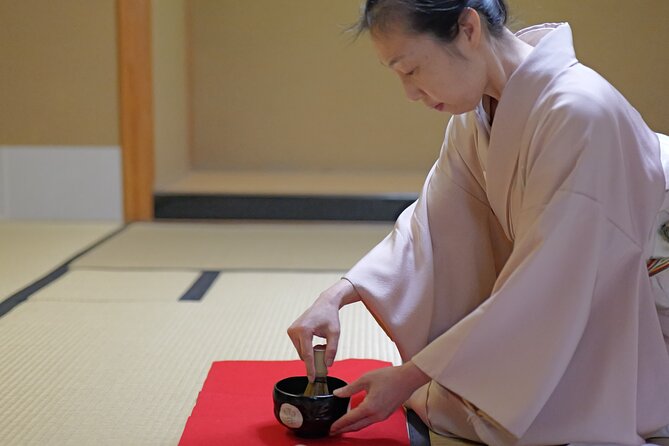
- Visitors can enjoy the traditional Japanese tea ceremony experience at the historic Keiken-do tea house in the Kurashiki Bikan Historical Quarter.
- The tea ceremony ritual, with its principles of harmony, respect, and purity, allows participants to gain a deeper appreciation for Japanese tea culture.
- The knowledgeable host guides guests through the intricate steps of preparing and serving matcha tea, fostering a sense of mindfulness and contemplation.
- Exploring the well-preserved, centuries-old architecture and picturesque canals of the Kurashiki Bikan Historical Quarter complements the serene tea ceremony experience.
- The journey to and from the tea house through the charming Bikan Historical Quarter adds to the overall culture and appreciation for the rich heritage of the region.
Getting to the Meeting Point
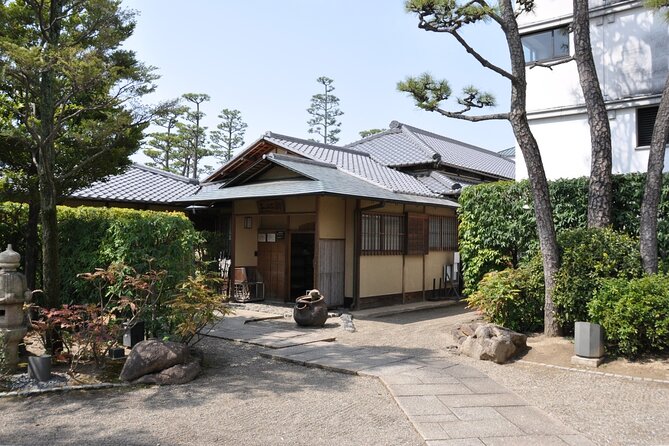
From Kurashiki Station, travelers can exit and walk southeast on Kurashiki Ekimae-dori street for about 10 minutes to reach the meeting point at Keiken-do, located at 1-chōme-1-20 Chūō, Kurashiki, Okayama 710-0046.
The journey takes visitors through the charming Kurashiki Bikan Historical Quarter, known for its well-preserved historic buildings and picturesque canals. Along the way, travelers can admire the traditional architecture, browse local shops, and soak in the serene atmosphere of this unique part of Kurashiki.
Reaching the meeting point at Keiken-do, visitors will be greeted and prepared for the upcoming tea ceremony experience in this beautiful historical setting.
Fascinated by Kurashiki's past? More historical tours we've covered
Arrival at Keiken-do
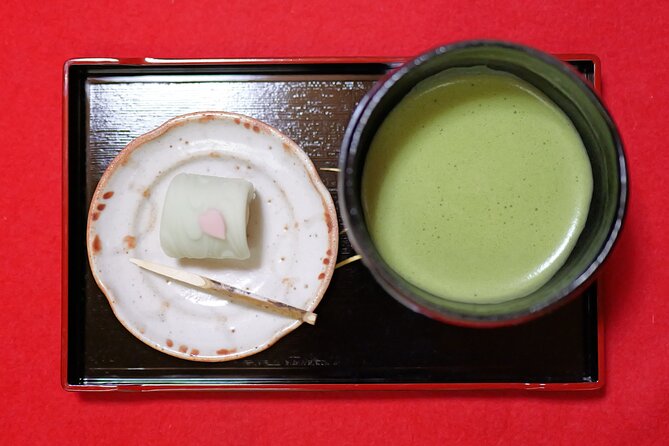
Upon arrival at Keiken-do, visitors are warmly welcomed by the host and ushered into the traditional Japanese tea house. The serene atmosphere immediately envelops them, as they take in the meticulously curated details of the historic setting.
The tea house offers a tranquil respite from the bustling streets outside, allowing guests to fully enjoy the art of the tea ceremony.
The experience is marked by:
- Mindfulness, as each movement and gesture is executed with graceful precision.
- Appreciation, as the host shares insights into the cultural significance and symbolism of the ceremony.
- Connection, as the shared ritual fosters a sense of harmony and community among the participants.
Traditional Tea Ceremony Procedures
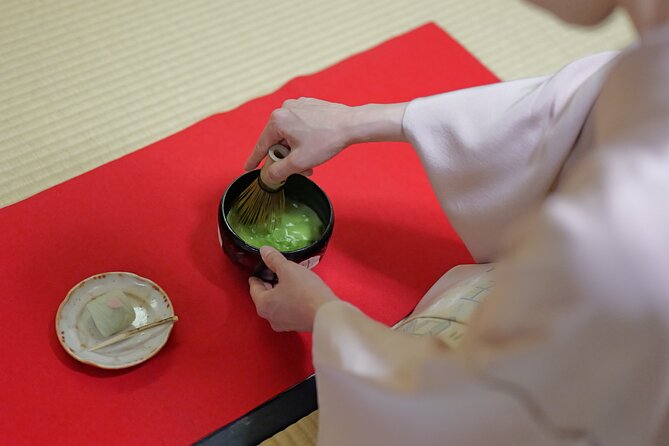
The traditional tea ceremony begins with the host meticulously preparing the tea utensils, arranging them in a specific order on a tray.
The guests then enter the tearoom, where they admire the beautiful surroundings and appreciate the calming atmosphere.
The host gracefully prepares the tea, grinding the powdered green tea leaves and whisking the mixture into a frothy liquid. Each guest is served the tea in a small ceramic bowl, which they hold with great care and reverence.
As they sip the warm, earthy beverage, your engage in quiet conversation, reflecting on the serene experience.
The ceremony concludes with the host cleaning the utensils, a final moment of tranquility before your depart.
Learning About Japanese Tea Culture
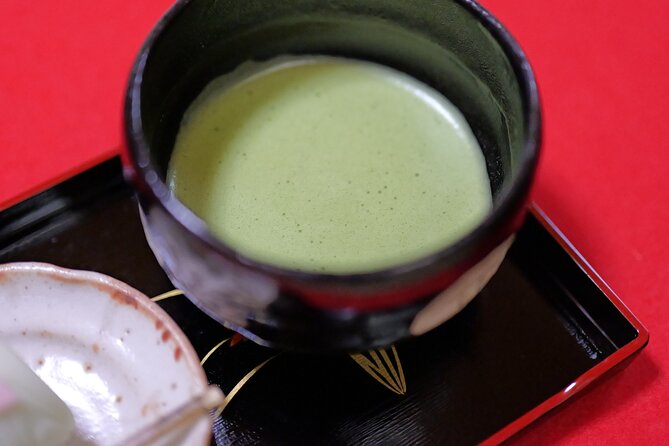
Tea culture in Japan has deep roots, dating back centuries and intertwining with the country’s rich traditions and spiritual practices.
Integral to this cultural heritage is the revered tea ceremony, or chanoyu, which elevates the simple act of preparing and serving tea into a refined, meditative experience.
The tea ceremony embodies three fundamental principles:
- Harmony – the blending of host, guest, and environment into a harmonious whole.
- Respect – the reverence shown towards each element of the ritual, from the utensils to the seasonal flowers.
- Purity – the cleansing of the mind and senses to achieve a state of tranquility and attunement.
Through this carefully choreographed ritual, participants enjoy the beauty and spiritual essence of Japanese tea culture.
Experiencing the Tea Ceremony Firsthand
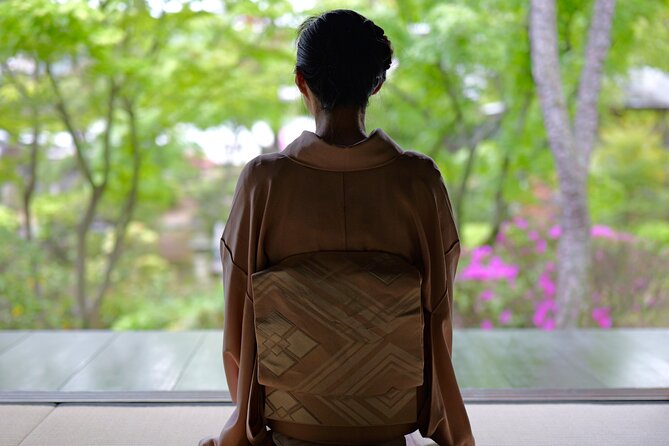
Visitors to the Kurashiki Bikan Historical Quarter can enjoy the captivating world of the traditional Japanese tea ceremony, led by knowledgeable guides who illuminate the ritual’s rich history and significance.
Participants will don traditional attire and gather in an authentic tea house, where they’ll learn the intricate steps of preparing and serving matcha tea. From carefully cleaning the utensils to gracefully presenting the tea, each movement is imbued with centuries of cultural tradition.
As they sip the earthy, frothy beverage, visitors gain a deeper appreciation for the artistry and mindfulness inherent in this revered Japanese practice. This immersive experience offers a unique window into the country’s revered tea culture.
Interacting With the Tea Ceremony Host
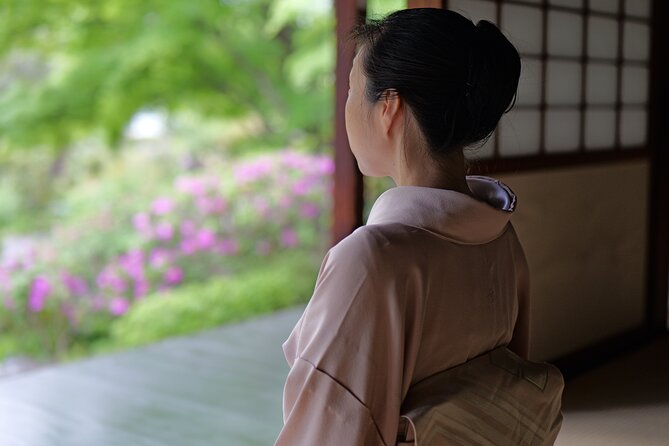
During the tea ceremony, participants engage with the host through a series of carefully choreographed interactions that exemplify the ritual’s reverence and etiquette. The host’s meticulous movements and attention to detail captivate your, inviting them to fully enjoy the experience. Through this exchange, the host imparts the profound significance of each gesture, from the precise placement of the tea bowl to the graceful pouring of the steaming beverage.
The tea ceremony embodies:
-
Respect: Guests demonstrate deference to the host and the ritual’s traditions.
-
Harmony: The host and guests synchronize their movements, creating a serene, unified experience.
-
Tranquility: The ceremony’s pacing and mindfulness foster a sense of inner calm and contemplation.
Exploring the Kurashiki Bikan Historical Quarter
The Kurashiki Bikan Historical Quarter enchants visitors with its well-preserved, centuries-old buildings lining the picturesque canals. This atmospheric district is a delightful contrast to the modern city, transporting guests back in time.
Quaint bridges arch over the calming waterways, while traditional merchant houses and storehouses stand as a testament to the area’s prosperous commercial past. Visitors can stroll the charming streets, admiring the distinctive black-tiled roofs and white walls of the historic structures.
Shops and cafes beckon, offering a glimpse into the local culture. The serene ambiance and beautiful scenery make the Kurashiki Bikan Historical Quarter a must-visit destination, offering a peaceful escape and a chance to experience Japan’s rich heritage.
Returning to the Meeting Point
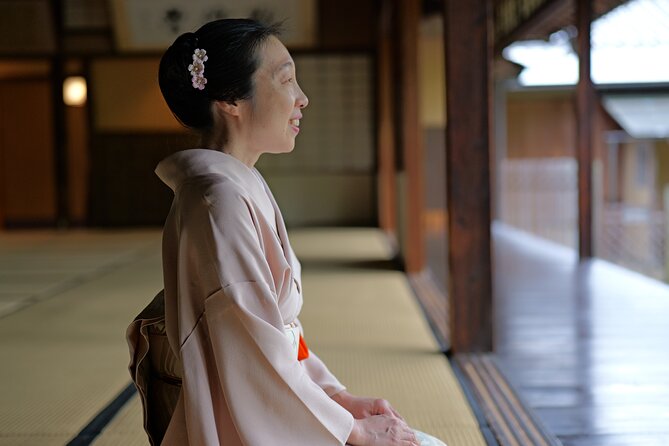
Once the tea ceremony concludes, participants make their way back to the meeting point at Keiken-do, retracing the 10-minute walk along Kurashiki Ekimae-dori street to the starting location.
As they stroll through the charming Bikan Historical Quarter, visitors can’t help but feel a sense of tranquility and appreciation for the cultural heritage surrounding them.
The return journey is an opportunity to:
- Reflect on the serene experience of the tea ceremony and the deeper significance of this centuries-old tradition.
- Appreciate the well-preserved architecture and picturesque scenery that define the Kurashiki Bikan Historical Quarter.
- Savor the final moments of this culture before returning to the hustle and bustle of everyday life.
Frequently Asked Questions
What Is the Duration of the Tea Ceremony Experience?
The tea ceremony experience lasts approximately 1.5 hours. Visitors are guided through the traditional ritual, learning about the customs and etiquette while enjoying the serene atmosphere of the historic Kurashiki Bikan Quarter.
Is There a Dress Code for the Tea Ceremony?
There’s no strict dress code for the tea ceremony, but visitors are encouraged to wear comfortable, casual attire. Modest, respectable clothing is preferred to maintain the traditional ambiance of the event.
Can I Take Photos During the Tea Ceremony?
Typically, taking photos during a tea ceremony is not permitted, as it can disrupt the traditional and meditative atmosphere. Guests are usually asked to refrain from taking photos out of respect for the cultural experience.
Are Vegetarian or Dietary Options Available?
The tour does not specifically offer vegetarian or dietary options. However, the host may be able to accommodate special dietary needs if notified in advance. Guests should inquire about any restrictions when booking the experience.
Is the Tea Ceremony Suitable for Children?
The tea ceremony is generally suitable for children, as it provides a unique cultural experience. However, the quiet, formal nature may be more engaging for older children who can appreciate the ceremony’s traditions. Parents should consider their child’s attention span and interest level.
Recap
Immersing oneself in the captivating world of the traditional Japanese tea ceremony at Keiken-do in Kurashiki’s Bikan Historical Quarter is a truly remarkable experience.
Visitors don traditional attire, learn the intricate steps, and gain a deeper understanding of Japan’s rich tea culture, all while enjoying the tranquil respite and artistry of this centuries-old practice.
More Tour Reviews in Kurashiki
Not for you? Here's more things to do in Kurashiki we have recnetly reviewed
- 4 Best Guided Tours In Kurashiki
- Okayama Kurashiki Tour: Experience Canal Boat Ride
- 2 Hour Relaxed Cycling Tour at Kurashiki Bikan District
- Seto Inland Sea Islands & Kojima Denim Cycling Tour
- Kurashiki Walking Half Day Private Tour
- Kurashiki Bar Hopping Night Tour in the Bikan Historical Quarter
- Beyond Naoshima: Direct Transfer & Guided Kurashiki Tour From Uno
- 5 Best Tours In Kurashiki
